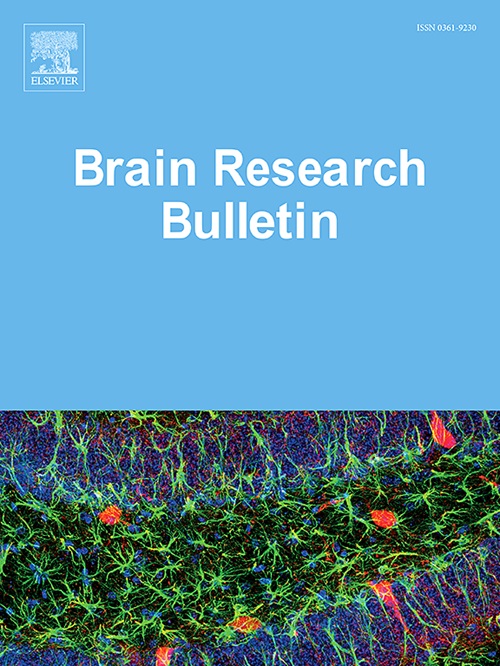Stem cells from tooth apical papilla modulate fibromyalgia-like changes in mice
IF 3.5
3区 医学
Q2 NEUROSCIENCES
引用次数: 0
Abstract
Background
The treatment of fibromyalgia remains a current challenge. While the analgesic effects of mesenchymal stem cells have been the subject of previous research, their potential in managing fibromyalgia symptoms needs further investigation. In this study, we investigated the effects of human stem cells from tooth apical papilla (SCAP), when administered systemically, in a mouse model of fibromyalgia induced by reserpine.
Methods
The effects of repeated intraperitoneal (i.p.) treatment with SCAP were evaluated in the mouse model of fibromyalgia induced by reserpine, by assessing behavioral and biochemical parameters.
Results
The systemic treatment with SCAP significantly reduced the mechanical and thermal hypersensitivity induced by reserpine in mice. Moreover, the SCAP treatment also reversed depression-like behavior, as assessed in the forced swimming test (FST). The SCAP administration partly restored the reduction in the total number of entries in the elevated plus maze but failed to alter the fatigue intensity or the grip strength. The treatment with SCAP significantly increased dopamine, glutamate, and glutathione levels in the masseter muscle compared to the vehicle-treated control animals. Conversely, the SCAP administration decreased the glutathione levels in the prefrontal cortex and spinal cord compared to the control mice. Finally, the repeated treatment with SCAP led to a significant increase in the spinal cord levels of the chemokine CXCL1/KC.
Conclusions
Our research findings offer new insights into the efficacy of human SCAP in a pre-clinical model of fibromyalgia, likely through the modulation of both peripheral and central mechanisms.
求助全文
约1分钟内获得全文
求助全文
来源期刊

Brain Research Bulletin
医学-神经科学
CiteScore
6.90
自引率
2.60%
发文量
253
审稿时长
67 days
期刊介绍:
The Brain Research Bulletin (BRB) aims to publish novel work that advances our knowledge of molecular and cellular mechanisms that underlie neural network properties associated with behavior, cognition and other brain functions during neurodevelopment and in the adult. Although clinical research is out of the Journal''s scope, the BRB also aims to publish translation research that provides insight into biological mechanisms and processes associated with neurodegeneration mechanisms, neurological diseases and neuropsychiatric disorders. The Journal is especially interested in research using novel methodologies, such as optogenetics, multielectrode array recordings and life imaging in wild-type and genetically-modified animal models, with the goal to advance our understanding of how neurons, glia and networks function in vivo.
 求助内容:
求助内容: 应助结果提醒方式:
应助结果提醒方式:


